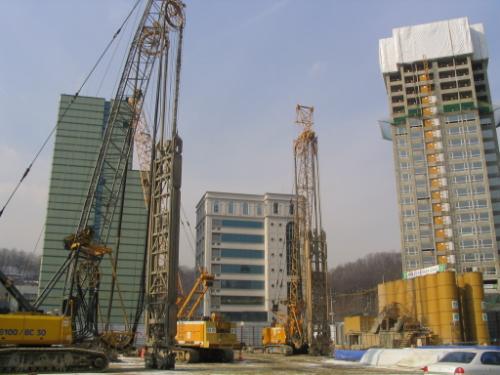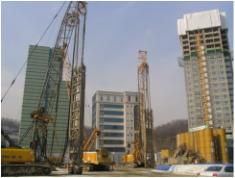Onshore
H > BUSINESS > Onshore

- Diaphragm wall
-
- Diaphragm Wall / Slurry Wall
Diaphragm Wall / Slurry Wall
Diaphragm wall is underground structural elements commonly used for retention systems and permanent foundation wall. They are also used as deep groundwater barriers.
Cast in place diaphragm wall is usually excavated under bentonite slurry. Various types of excavation equipment can be used depending on project conditions, including hydraulic excavators, and kellymounted or cable-hung clam buckets.
Diaphragm wall construction begins with the trench being excavated in discontinuous sections or "panels".
Stop end pipes are placed vertically at each end of the primary panel to form joints for adjacent secondary panels.
Once the excavation of a panel is complete, a steel reinforcement cage is placed in the center of the panel. Concrete is poured in one continuous operation through one or more tremie pipes that extended to the bottom of the trench. The tremie pipes are extracted as the concrete rises; however, the discharge end of the tremie pipe always remains embedded in the fresh concrete.
The slurry, that is displaced by the concrete, is saved and reused for subsequent panel excavations.
When the concrete is seted, the end pipes are withdrawn. Similarly, secondary panels are constructed between the primary panels to create a continuous wall. The finished wall may be cantilever or require anchors/props for lateral support.
A variation of the technique is the precast diaphragm wall. With this method a continuous trench, or longer panel, is excavated under self-hardening cement bentonite slurry. The slurry is retarded to have fluidity during construction. After a sufficient length of excavation is complete, a crane lifts the precast concrete wall section into the trench. The cement bentonite slurry sets to form the final composite wall. Alternately, the trench is excavated under bentonite slurry, which is then displaced with cement bentonite slurry.





